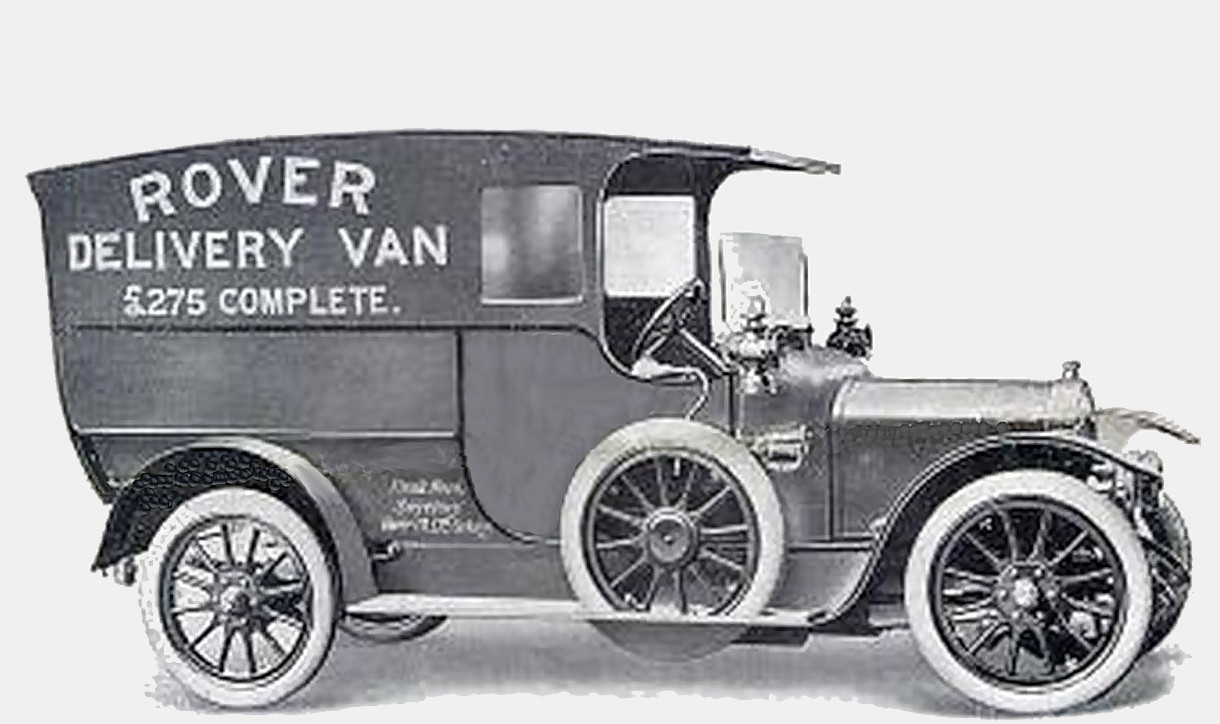
ROVER 12hp 'Clegg'
The Delivery Van
1912 - 1915
The van - model of the ROVER 12hp "Clegg", here in model year 1913, is widely unknown.
There is only a simple advertising leaflet for the van model of the ROVER 12hp "Clegg". The specifications given there correspond to those of the 4-Seater Tourer, with the following differences:
| Differing specifications (compared to 4-Seater Tourer) |
|---|
| >Gears |
| Ratio: First and Reverse, 19,5:1; Second, 9,2:1; Top, 4,85:1. |
| Dashboard |
| No Mahagony-Dashboard |
| Tyres |
| Heavy Dunlops, 820 x 100; Steel spare wheel |
| Body |
| Mahogany body with fixed roof, very spacious |
| Interior Dimenions: Height 4 ft 9 ins / 1448 mm - Width 4 ft 2½ ins / 1283 mm - Length 5 ft 2 ins /1575 mm. |
| Equipment |
| Complete with paraffin side and rear lights, two acetylene headlights, spare wheel with tyres, horn |
| Price |
| £275 - Part payment can be agreed upon upon request |
| Dimensions and Weights |
| Wheelbase: 9 ft 8 ins / 2946 mm/td> |
| Length over all: 14 ft / 4267 mm |
| Width over all: 5 ft 6 ins / 1676 mm |
| Height over all: 6 ft 11 ins / 2108 mm |
| Weight complete: 22½ cwt / 1.143 kg |
| Weight of chassis: 14½ cwt / 737 kg |
| Length of the frame - dash to the middle of the rear axle: 7ft 2 ins / 2184 mm |
| A l l i f o r m a t i o n w i t h o u t G u a r a n t e e |
| Sources | |
|---|---|
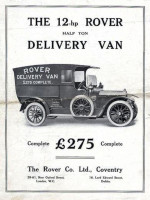 | Rover 12hp Delivery Van Leaflet ca. 1913 Rover Company, Ltd., Coventry |
From the end of 1915, there were attempts to convert private vehicles to drive with coal gas. The reason for this was the shortage of petrol, which allowed virtually no private motor vehicle use. Initially, highly compressed coal gas was used in steel cylinders until its use was prohibited for civilians. After that, uncompressed gas was used, which was carried in very voluminous "balloons".
To this end we found the following article fragment in The Illustrated London News dated November 3, 1917, but we were unable to locate the rest of the article. Nevertheless, we do not want to withhold it.
The A.A. and Coal-Gas
When the Automobile Association raised the question of the use of coal-gas with the Ministry of Munitions, I ventured to doubt the wisdom of its action, and pointed out that it is better to allow sleeping dogs to lie. Apparently, there has been more correspondence, since the Association has sent me a communication headed „Coal-Gas on Motor-Cars: Official Sanction Obtained by the A.A.“, which embodies the gist (?) of a reply from the Ministry to the Association’s inquiry. The effect of this is that so long as the gas is conveyed, as is at present the case, in bags at or slightly above atmospheric pressure, and not compressed in steel cylinders, it is not considered that there is at the present time any need, on general grounds, for restrictions on the use of coal-gas for motor purposes. At the same time, it is pointed out, if motorists were to use coal-gas on any considerable scale it might, in the interests of national requirements, become necessary at some future time to impose certain restrictions upon its use. In the first place, I must say I like the Association’s claim to have obtained official sanction for the use of gas! As a matter of fact, the A.A. has not interested itself at all in the matter, and it was not until the use of coal-gas had attained considerable dimensions, and had become the subject of lengthy discussions in the Press, that the Association awakened to the fact that anything was being done to mitigate (?) the evils attendant upon a shortage of our normal fuels. It has simply sat down with folded hands and allowed other people to do the work, and then, ehen the thing had been accomplished, the Association put in its oar (?) and has placed the motorist in the position of having to say: „Thank you for nothing“.
There is little doubt that the interference of the A.A. will simply result, before long, in restrictive Orders being made by the Ministry of Munitions, or whatever is the competent authority in these matters. Indeed, it seems to me that already the position tends to become ambiguous. The Ministry says it has no objection to the use of gas so long as it is not used compressed in steel cylinders. We know that the best practical manner of using it is compressed in metal cylinders, and a fair number of cars are fitted with gas-holders of this type. What happens to them? Will their owners have to take down the cylinders and substitute „balloons“? Not at the moment, of course, because the communication I have quoted from is not an Order, but it clearly foreshadows the issue of an Order at an early date. Evidently, such an Order was superfluous until attention was called to the increasing use of coal-gas, because it is a matter of extreme difficulty to obtain the steel cylinders nowadays, and their supply is automatically dealt with by the various Orders restricting the supply of steel and other metal cylinders except for national purposes. But once a situation has been outlined it becomes necessary, from the official point of view, to regulate it; and in this case it does not seem that there is any alternative to forbidding the use of of steel cylinders altogether, unless the Ministry is going to permit their unrestricted use within the four corners of the supply Orders to which I have referred. Obviously, that is not going to be done; and what, therefore, we have to thank the A.A. for doing, in the effort to secure a little of the limelight for itself, is to have started the Ministry of Munitions thinking hard about the use of coal-gas for purposes other than those of pure business.
An Effect of the Petrol Order
Already one of the effects I prophested (?) as likely to result from the latest Petrol Restricton Order has come to pass. Firms and individuals engaged on work of national importanc have found their activities hampered by the necessity to stop and explain to the police hald-a-dozen times in the course of a journey that they are really not joy-riding, but (?) are doing their best to get on with their share (?) of the war. I am given to understand that the question of issuing a distinctive badge to be carried by cars which have a right to be using petrol for war work is under consideration by the competent authority, and will probably be issued before long. In con versation the other day with one of the largest manufacturers of aeroplane engines, I gathered that the work is likely to be seriously hampered unless such a distinguishing badge is issued soon. It seems to be difficult to persuade the police that the ordinary passenger car which is carrying two or three civilians may, equally with the lorry loaded with castings, be engaged on national work of the utmost importance. I agree that it is impossible to forsee everything, but this is an aspect which surely might have occurred to the Petrol Controller before he made his latest Order.
In Case of Invasion
The Board of Trade has given notice that the issue of a petrol licence will be subject in future to the condition that the licence shall hold himself, or his paid driver, and his motor car or cars, at the disposal of the military ....... (Note: the end of the article is missed.)
Source: Illustrated London News, 3 November 1917
A strange sight: A Rover 12hp delivery van as a test vehicle with coal gas - drive
The caption reads:
The New Method of Progression: A Rover, Running Successfully on Coal-Gas.
The adoption of coal-gas as a new source of power is proving very successful. Our photograph shows a standard 12 h.p. Rover car running on coal-gas. The installation was made by the British Rubber Manufacturers, Ltd.
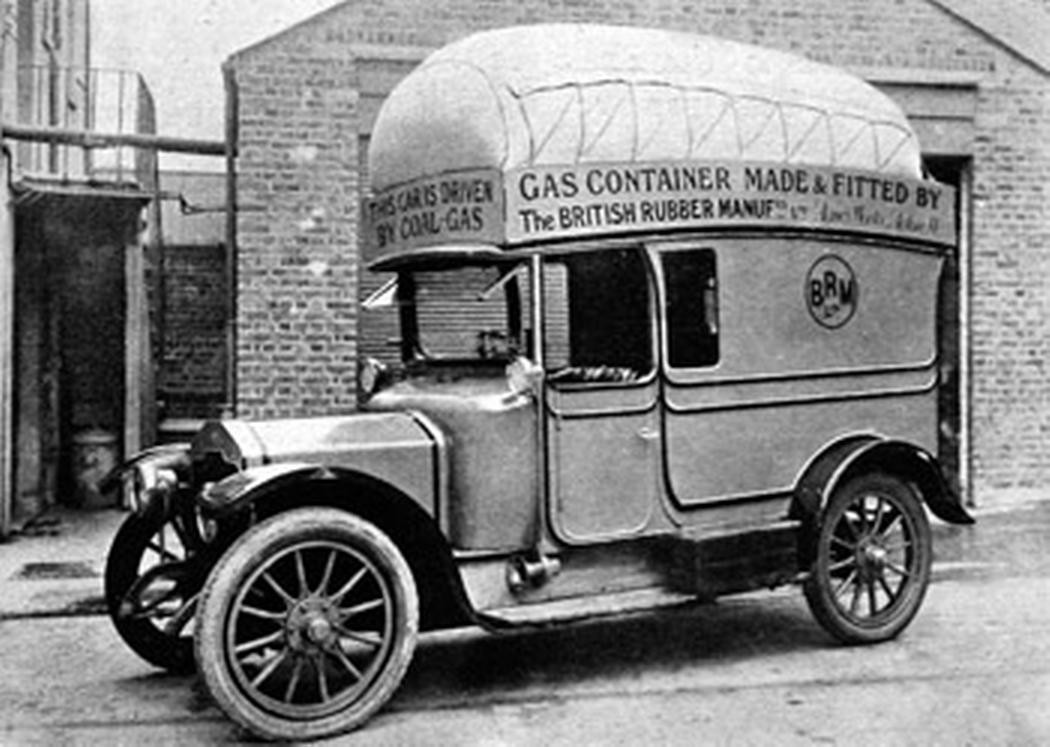
A ROVER 12hp Delivery Van in daily use
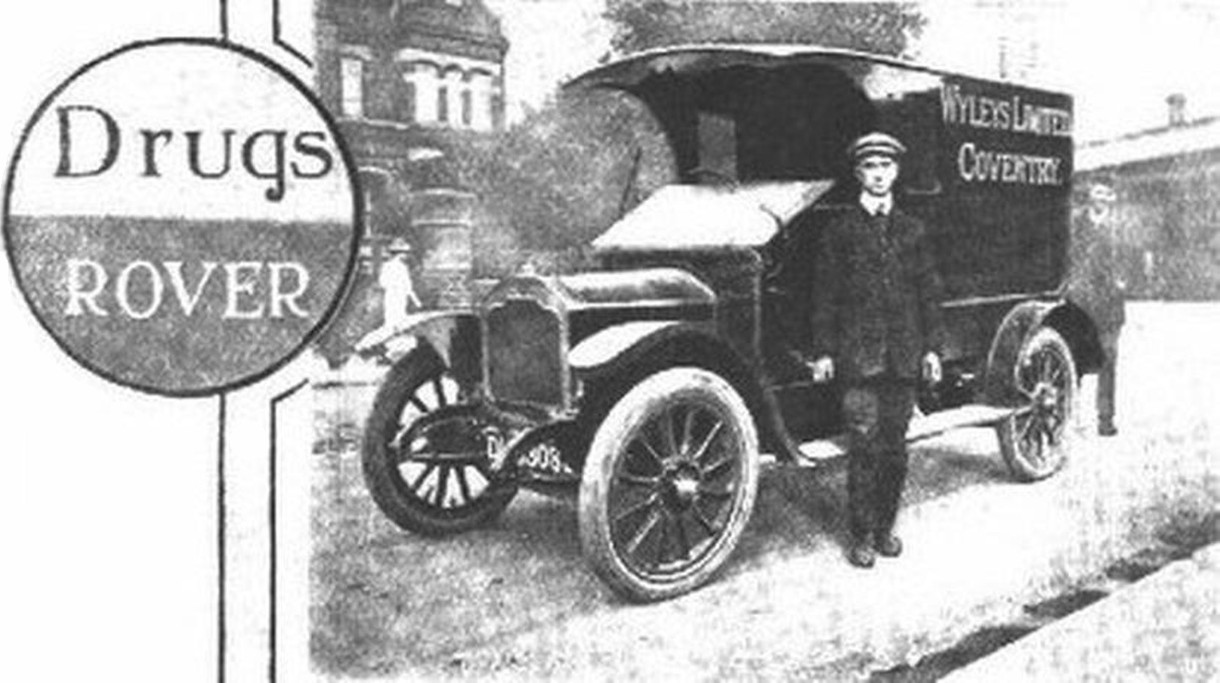
A ROVER 12hp delivery van in use for a chemical shop - the deviating design of the front bulkhead is striking.
An article in the Commercial Motor of 6 March 1913 reports on delivery vehicles in Birmingham and the surrounding area. From this article we took the above illustration and the following report on the ROVER 12hp van:
Wyleys Ltd., of Coventry, is a well-known manufacturing chemist; it owns two motorvans at the present time, and both of these are Rovers. The one which we illustrate is of the 12 h.p. type, and is used for delivery of drugs, chemicals, etc., to medical men, veterinary surgeons and chemists, and in this employment it covers up to 300 miled per week. A special advantage both to the manufacturer concerned and to its customers is the delivery of goods in this way much more quickly than by railway. A considerable proportion of such delivery is of necessity in the nature of emergency service. It is also found that the goods can be handed into the surgery or the shop direct without packing, which saves a considerable amount of time and inconvenience to customers, over and above the cost to Wyleys of such packing.Otherwise only one image of the ROVER 12hp Clegg Delivery Van is known, which we do not want to withhold from you.
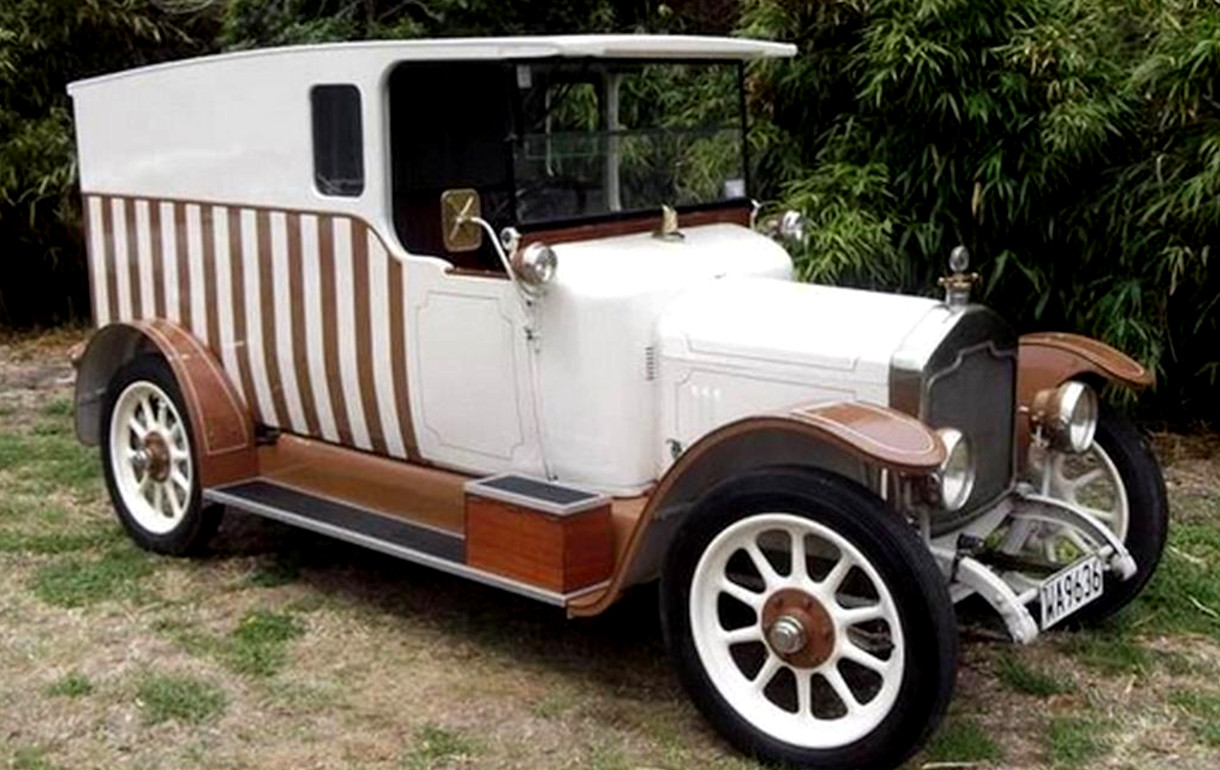
Source: Jack Frost / Pinterest - The model year is not known
© 2021-2025 by ROVER - Passion / Michael-Peter Börsig

 Deutsch
Deutsch